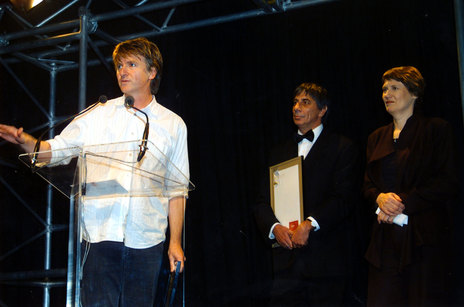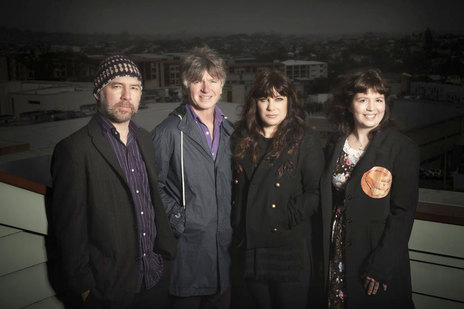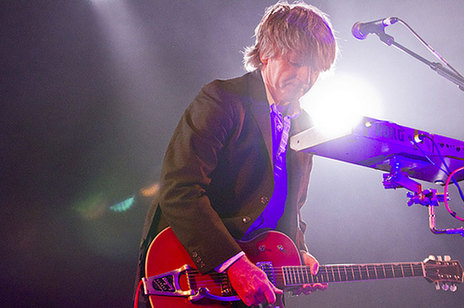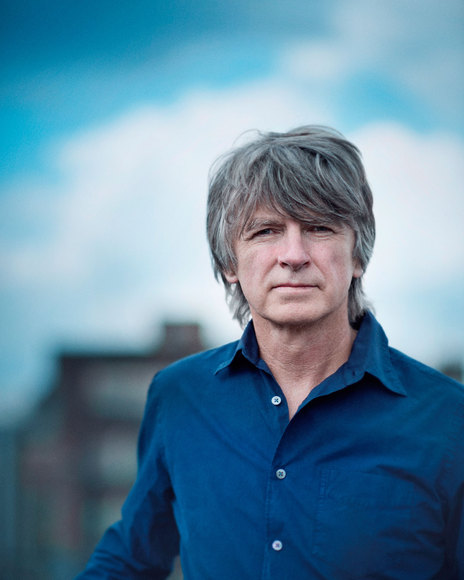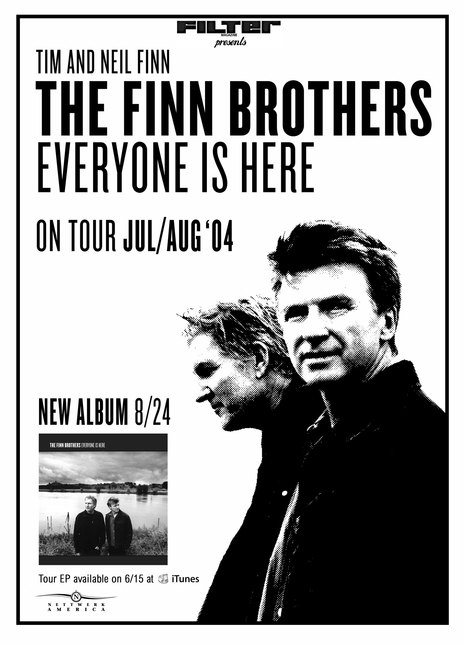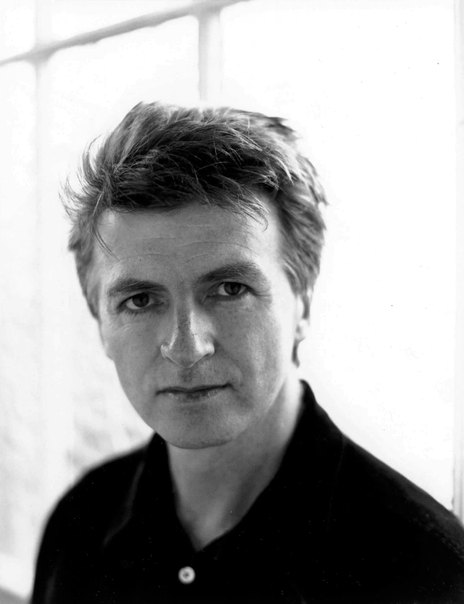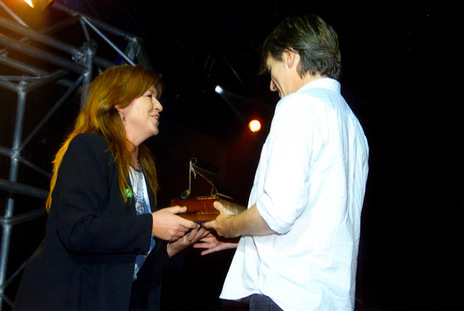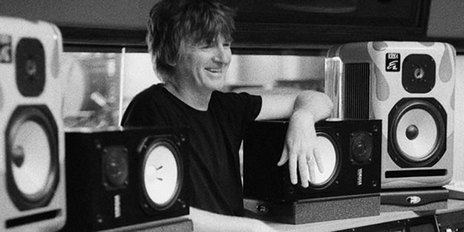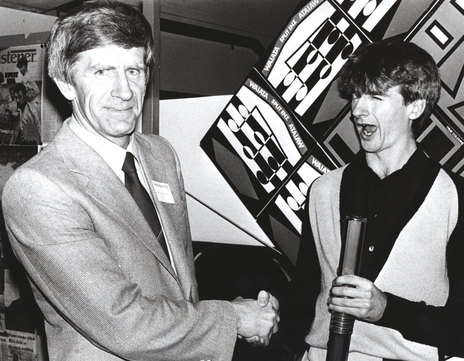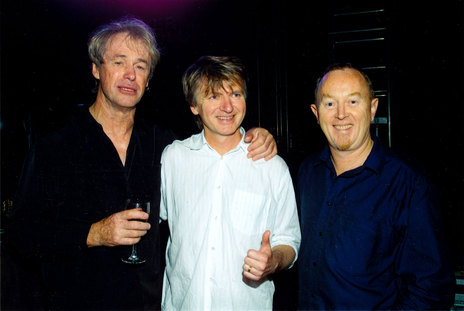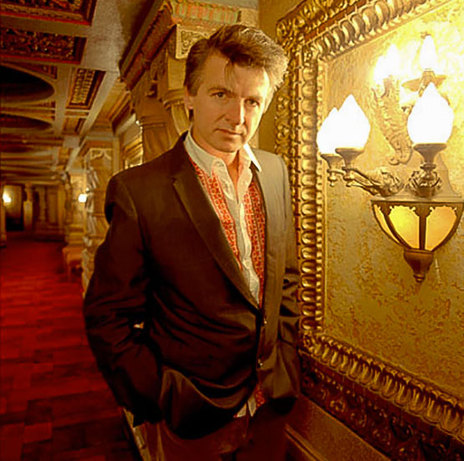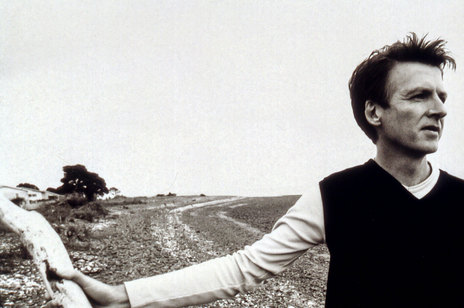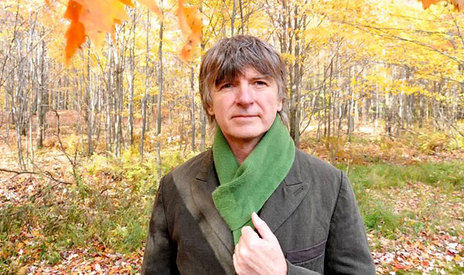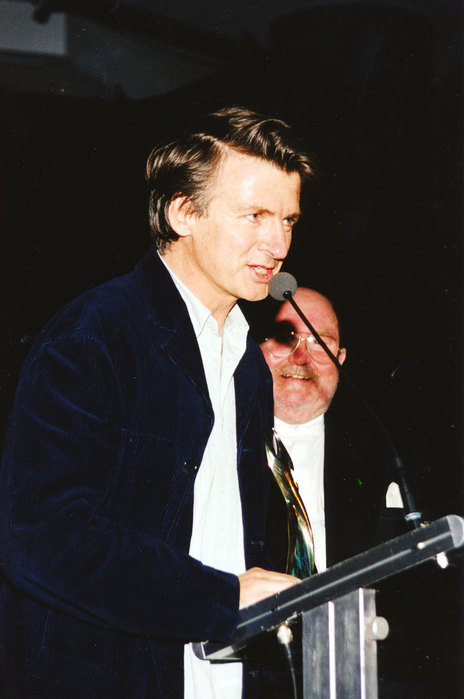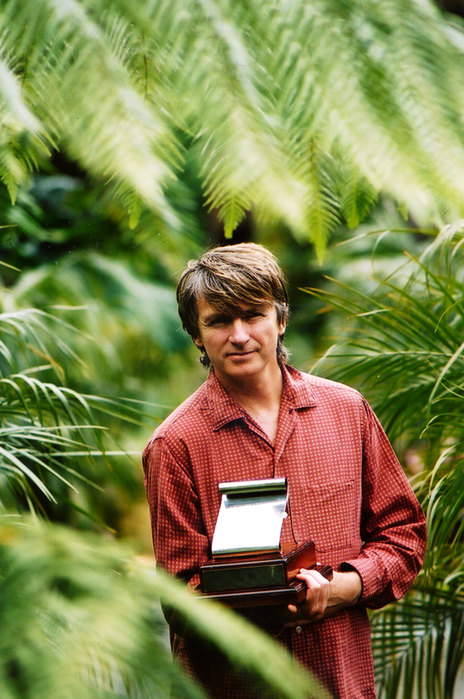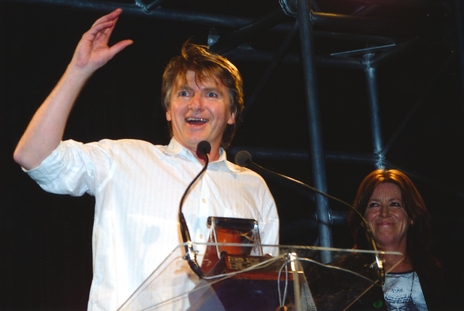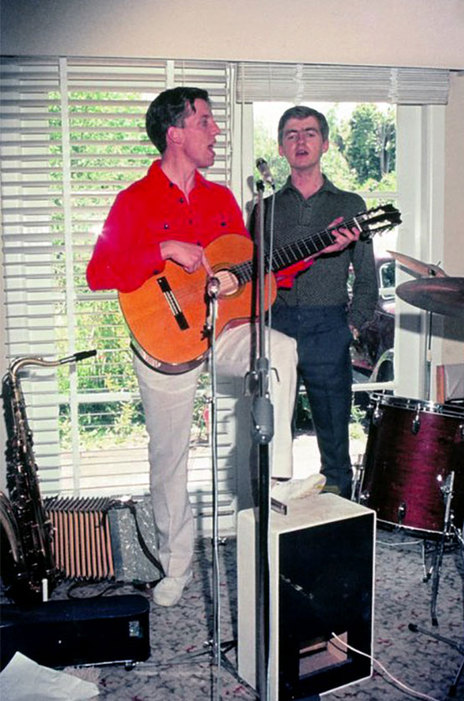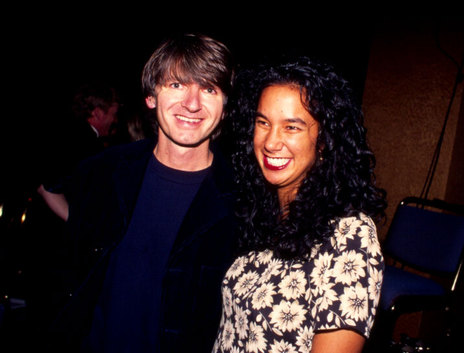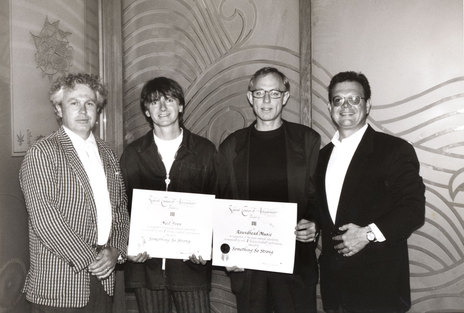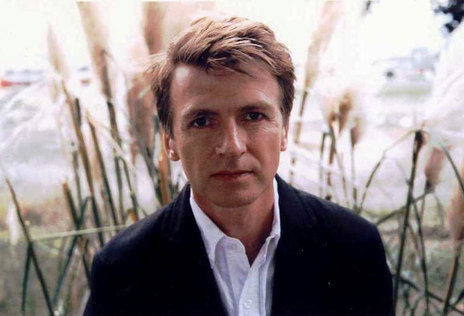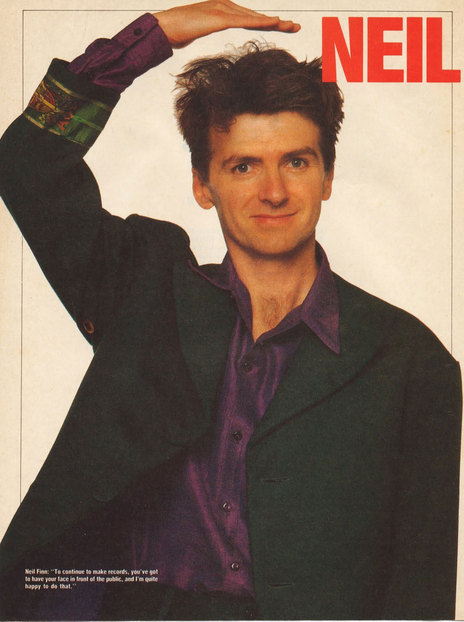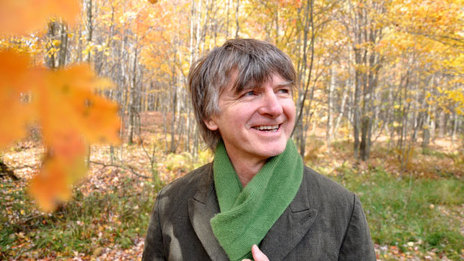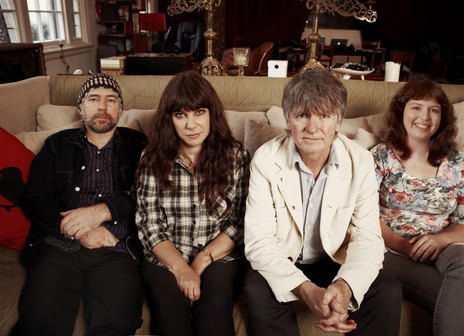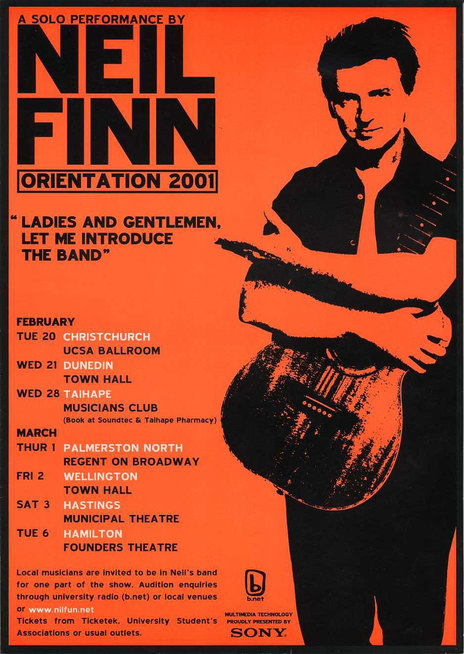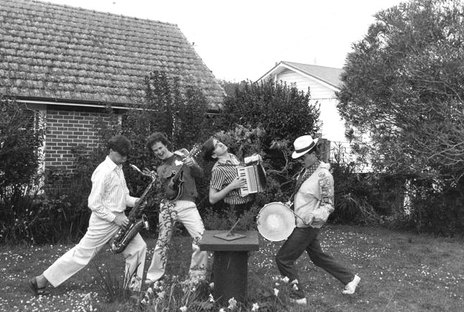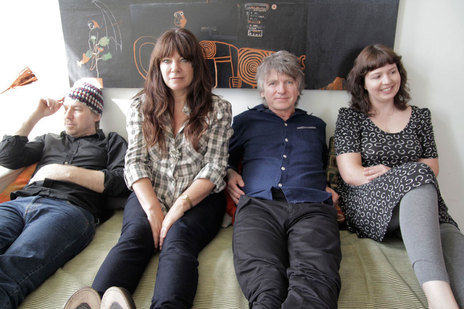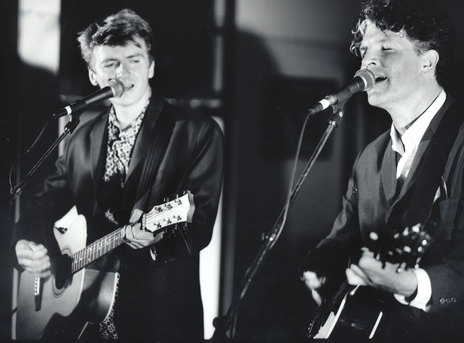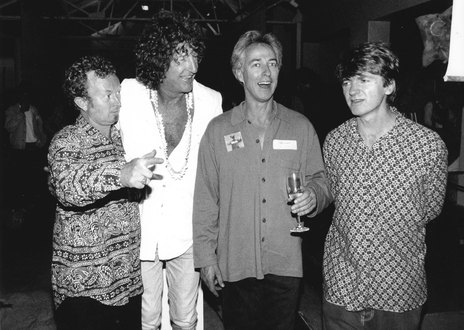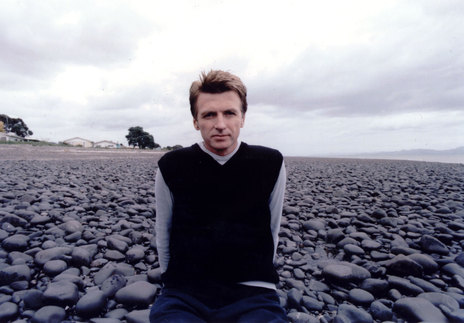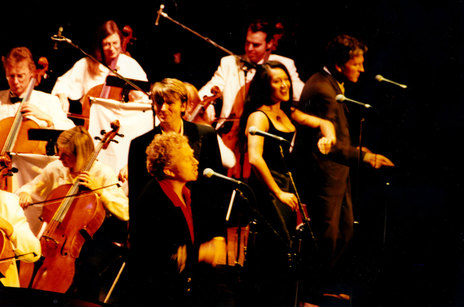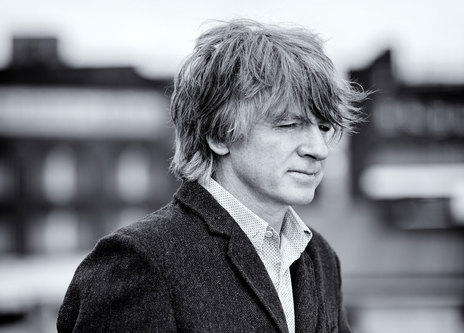Yet looking at his career outside of Split Enz and Crowded House, there is one common element – he is constantly taking musical risks. But because of his tendency to polish his creations, the results of these forays are never slapdash. Accusations of being MOR ignore experiments such as the first Finn album with brother Tim Finn in 1995, his debut solo disc Try Whistling This (1998), or the cathartic empty-nest sessions with wife Sharon, Pajama Club (2011).
It is nearly 20 years since Finn pulled the plug on the original Crowded House, and in that time there have been three solo albums, a second “brothers” album, a soundtrack (Rain), an attempt at a rugby anthem (‘Can You Hear Us?’), a Hobbit theme (‘Song of the Lonely Mountain’), a tour and live album with Australian peer Paul Kelly, two international all-star workshops and concert series in Auckland under the 7 Worlds Collide banner, even a tour of provincial New Zealand that recruited and rehearsed local musicians on the day of the concert. These off-road adventures are not the itinerary of someone who takes the safe path.
To challenge this idea, Finn regularly roughs up the sheen, cranks up the volume and “wigs out”. Then, as if taken aback by his brashness, he either segues into a subtle, melodic middle-eight, or places an acoustic gem after a noisy outburst. Together Alone, the fourth and last album of the original Crowded House, was intended to deliberately challenge the good taste by employing as producer a sonic shaman formerly of Killing Joke: Youth. Yet the ringing, exuberant ‘Black And White Boy’ and the confrontational screamer ‘Locked Out’ are followed by a lyrical trilogy: ‘Distant Sun’, ‘Walking on the Spot’ and ‘Private Universe’. Inevitably, it is the latter sequence that has resonated longest with the public. The first two solo albums – Try Whistling This and One Nil – show similar stark contrasts, with the rocked-up outbursts being leavened by passages of calm that serve as aural and spiritual relief.
Recorded in late 1992, Together Alone marked the beginning of Neil Finn’s return to New Zealand.
Recorded in late 1992, Together Alone marked the beginning of Neil Finn’s return to New Zealand, from which he had departed in 1977 as an 18-year-old to join Split Enz in the UK. Significantly, as soon as he arrived in London – on the way to the band’s rehearsal room – he bought an electric guitar, an instrument he had never owned or played in public. It had been an acoustic apprenticeship, practising Beatles and Carole King songs on the family piano and his own guitar. In his mid-teens he was writing original songs, and at his first professional gigs – supporting Split Enz in 1976, then in the short-lived Auckland band After Hours – he unveiled them, as well as the odd Beatles cover such as ‘Cry Baby Cry’.
Finn has sometimes been hesitant about naming his influences, not wanting to pigeonhole his creativity (or be regarded as a pastiche tribute act, like Oasis). As a child he set up a gramophone in his bedroom and listened over and over to The Beatles’ White Album, drifting off to sleep after the chaos of ‘Revolution #9’ segued into the lachrymose ‘Goodnight’. Early concerts he saw included the theatrical Jethro Tull and Elton John in his pre-pomp phase. Apart from family parties, his own first performances were in a folk-club context, when Cat Stevens was in the air.
In early 2014 Finn revealed to Barnaby Smith of web magazine The Quietus his favourite albums. Together they have set the template for an original songwriting voice. He chose Beatles For Sale – its succinct songs were made to sing at parties – and, as expected, Carole King, Neil Young, David Bowie and Roxy Music. Split Enz’s debut Mental Notes was an experimental epic, deeply absorbed by a teenager aspiring to emulate big brother. “I used to write 10-minute songs at that point as well, and realised fairly soon there were probably two or three three-minute songs in there instead, and that was the better way to go.”
The folk-opera Porgy and Bess he mentioned because, “The music of Gershwin made a big impact on me, his use of chords and the way he sort of formalised blues music and made it rich and orchestral”. For their hypnotic grooves and melodies, he chose Bob Marley’s Exodus and Tinariwen’s Tassili. Radiohead’s In Rainbows he admired for the group’s “adventurousness and their desire to embrace new technology and electronica.” And two New Zealand albums that still affect him are The Phoenix Foundation’s Buffalo and The Chills’ Submarine Bells. On the latter, Martin Phillipps was “aiming high. The song ‘Submarine Bells’ is one of my favourite songs, with a beautiful arrangement that evokes the underwater, and the deep south of the South Island.” Combined, these influences give him a palette to create something personal and fresh.
In 1993 Finn returned home to leave home: back in Auckland to live, an almost subconscious separation from Crowded House began, a process accelerated by Paul Hester’s departure from the band during a tour of the US in April 1994. The following year, with new drummer Peter Jones, the band made some recordings in Auckland that were abandoned. Finn was in another creative space.
Neil and Tim had been toying with the idea of making a “brothers” album, and they finally got the chance in late 1994.
For years Neil and Tim had been toying with the idea of making a “brothers” album, and they finally got the chance in late 1994. In the 10 years since Split Enz, like his songwriting signature, Finn minor had become Finn major. Neil was in the afterglow of the relaxed but creatively intense, Cardhu-whisky sessions for Dave Dobbyn’s Twist, which he produced with Tchad Blake engineering. Tim had recently recorded in Ireland with Liam Ó Maonlaí and Andy White, in sessions that saw them dabbling with exotic instruments. The Finn brothers spent 10 days in Neil’s basement studios and at Bethell’s Beach exploring ideas, developing sketches they put aside to be shaped into songs. After a holiday in Rarotonga, where they absorbed music at the Pacific Arts Festival, they returned to Auckland, booked time at York Street studio near Neil’s house, and settled in to record the Bethell’s sketches with Blake co-producing.
Finn wasn’t the slick harmony record that many would have predicted after Woodface. “We wanted to take the atmosphere of the writing to the recording stage,” said Neil. “We weren’t labouring on structures, and we only had a month, so there wasn’t time to go and sit by a beach and think about the last two lines.” The brothers played virtually all the instruments including a tea-chest bass and vintage keyboards from the 1960s such as the Chamberlain and Mellotron. It was like a Finn brothers’ musical scrapbook, the melodic snapshots providing forgotten or unrealised links between Paul McCartney’s first solo albums and Chris Knox’s 4-track experiments, the Bee Gees and Split Enz, Elton John, Jimi Hendrix and George Formby.
The Finn album was a charming diversion, like the sound from their childhood bedroom if its walls could talk. The songs ‘Angel’s Heap’ and ‘Suffer Never’ show their increasing taste for raw atmospherics. But two piano ballads by Neil shine like jewels among the Pacific psychedelia. They could have been written in his teenage years, when he spent so much time exploring ideas on the family piano. In ‘Last Day of June’ the piano chord changes, one descending semitone at a time – a trademark of John Lennon’s in songs such as ‘Dear Prudence’. The song ‘Where is My Soul’ shows Neil’s continued use of religious imagery – and his mastery of the bridge section – in a soaring middle-eight that begins, “And when I wake up/ with my conscience clear …”
While Neil was making decisions about the future of Crowded House, the brothers embarked on a well-received world tour.
Because of its intimate, unpolished character, Finn became one of the most fondly regarded albums of the brothers’ careers – for the hard-core fans and the Finns themselves. “I don’t want people to see this as bit of a dabble before I get back to the real stuff,” Neil said when it was released in late 1995. “This is part of a continuum, and we’re very pleased with it.” In early 1996, while Neil was making decisions about the future of Crowded House, the brothers embarked on a well-received world tour, with concerts having the intimacy of a family party mixed with the humour of psychedelic cabaret.
While in Ireland, the brothers recorded a song for a compilation of modern Irish artists, produced by Donal Lunny. Feeling apprehensive about performing a traditional Irish song, like the other high-profile contributors, they quickly wrote an original. ‘Mary Of The South Seas’ was a slow waltz inspired by their mother’s emigration from Ireland at the age of two, written and recorded very quickly in Dublin. Other side projects for Neil early in 1996 included sessions with Sheryl Crow (only his backing vocals were used on her song ‘Every Day Is A Winding Road’), and melodies for songs co-written with Shawn Colvin (‘What I Get Paid For’) and with Annie Crummer’s mother Tania (‘Here Come The Gods’).
Finn spent much of 1996 touring to support Finn, while closing down Crowded House after the release of the anthology Recurring Dream. His first solo album emerged in mid-1998, and the title sounded like a dare. Try Whistling This implied that he was going to explore his wilder side, and while the results weren’t quite as challenging as threatened, it wasn’t a perfectly formed Crowded House album.
Try Whistling This was a postmodern, introspective singer-songwriter’s album.
Try Whistling This was a postmodern, introspective singer-songwriter’s album. There are loose rhythms and experiments with sound textures, sampling and tape loops. The heavier rock songs are still melody-rich. The delicate songs are also from the melodic side of melancholia, when the piano’s been drinking. He tried some radical ideas but found they didn’t give him the emotional impact. Try Whistling This had the melodies you’d expect from a Neil Finn record, and the themes: isolation and anxiety, with a catechism’s vocabulary. With his instinct for pop craftsmanship, he doesn’t stray too far from the accessible and the whistleable.
Collaborators on Try Whistling This included ex-Midnight Oil guitarist Jim Moginie (he co-wrote the title track, plus ‘Loose Tongue’ and ‘Truth’), bassist Sebastian Steinberg, and Mitchell Froom, who played Hammond organ on several tracks. ‘Sinner’ was written with Marius de Vries, an English producer, composer and former Blow Monkey. Finn ventured away from chord sequences that come too easily, and together they created a five-minute tape loop, a thoughtful melody, clashing beats, and obscure sounds from vintage keyboards. The chorus is a reassuring acoustic strum that characteristically returns to the major key. ‘She Will Have Her Way’ was the most conventional song on the album, with the ringing guitar sound of The Byrds and layered vocals that build towards a joyful chorus. The title track ‘Try Whistling This’ took Finn back to his early bedroom ballads such as ‘Late in Rome’. It is the sound of a slightly weary songwriter starting over again, exploring a few chord changes and some self-reflection, immediately post-Crowded House.
The successor to Try Whistling This came three years later. Mostly recorded in Finn’s basement home studio in Auckland, it was originally to be called Second Skin. “It feels like I’ve shed all aspects of my previous musical life,” he told me in 2001. He had recently cut ties with his manager, with Capitol, and with the Works label that released Finn in the US (as Finn Brothers). The album was eventually called One Nil, and found Finn at ease with his environment and his return to New Zealand. Largely written at Piha on the west coast of Auckland, where Finn had built a summer home, it is a sunny Pacific album compared to the intensity of Together Alone, recorded just a few miles south at Karekare.
One Nil is a subtle work, with wistful songs that slowly become earworms.
One Nil is a subtle work, with wistful songs that slowly become earworms rather than rely on radio-friendly pop structures and catchy hooks, so it has been undeservedly overlooked. The album has a languid, holiday feel, as if written on a sunny porch with an acoustic guitar; one of the strongest songs is called ‘Rest of the Day Off’. The dreamy ‘Wherever You Are’ sounds like Finn singing along plaintively to a tape loop, as if he’s been woken with a melody in his head. ‘Anytime’ confronts the inevitability of death, building slowly on suspended chords until he muses, “There’s nothing safe about this life/ I could go anytime” – then finds release in the bridge.
Finn has often mentioned that the first step in writing a song is to “get in the zone”. In the right, improvisational mood, the melodies and catch phrases will come. One Nil is the sound of a relaxed Auckland summer, and that feeling and sense of place is best captured in the closing track, ‘Into the Sunset’. It’s like the soundtrack to a road trip out to Piha, where one can kick back and concentrate on the surf. In the coda, Finn’s melody and mood has such a sense of ecstatic freedom that the moment almost levitates. The view ahead turns into a wide-open Pacific horizon, while the road drops suddenly down to the beach village. Away from home, rest stop in sight, the singer is flying high like a wheeling gull. He comes to rest under Lion Rock, over Marine Parade: “Maybe this time/ Here I’ll stay”.
Besides Mitchell Froom, prominent among musicians are Wendy and Lisa, the mid-1980s rhythm section in Prince’s band: bassist Wendy Melvoin and keyboardist Lisa Coleman. In the US, One Nil came out as One All; ‘Elastic Heart’ and ‘Don’t Ask Why’ were swapped for ‘Lullaby Requiem’ and ‘Human Kindness’. Almost simultaneously, Finn had been working with Ed McWilliams on a soundtrack of the New Zealand film Rain, directed by Christine Jeffs. Two poignant piano pieces, ‘Mum’s in Bed’ and ‘The Affair’ share the sparse, melodic impressionism of New Zealand composer Douglas Lilburn.
The result was 7 Worlds Collide, a five-night season in April 2001 at Auckland’s St James Theatre, with surprising renditions of songs by the guests.
In the same month One Nil was released, Finn was organising an all-star working holiday in Auckland for international musicians he admired. Feeling isolated from collaboration opportunities because of his New Zealand base, he invited Johnny Marr, Radiohead’s Ed O’Brien and Phil Selway, Sebastian Steinberg, Lisa Germano and Eddie Vedder to enjoy some Piha sun while working on music together. The result was 7 Worlds Collide, a five-night season in April 2001 at Auckland’s St James Theatre, with surprising renditions of songs by the guests: Eddie Vedder with Split Enz’s hymn-like ‘Stuff and Nonsense’, and belting out ‘I See Red’ with Tim Finn; Neil duetting on the Smith’s ‘There is a Light That Never Goes Out’ with Johnny Marr, who co-wrote it. Ventures such as this, and Finn’s involvement with local musicians since his return, gave the Auckland music scene in particular a feeling of self-confidence – and that it could be part of the world, rather than a distant outpost.
In 2003, at a tiny Auckland club, in front of an audience of fans and friends, the Finn brothers unveiled another batch of songs they had written together. Many were poignant reflections on the brothers’ relationship. ‘Disembodied Voices’ went back to their early home in Te Awamutu: “Talking with my brother when the lights went out, down the hallway 40 years ago/ What became much harder was so easy. Opening up and letting go …” Their Waikato boyhood was evoked in ‘A Life Between Us’: “In so many ways, I’m the same as you … and we stare at each other / like the banks of a river. And we can’t get any closer.” Everyone Is Here was an album with family at its core, written and recorded not long after the death of their mother.
Originally recorded in upstate New York with veteran producer Tony Visconti (David Bowie, T Rex), Everyone Is Here was almost completely re-recorded in Los Angeles, with Crowded House producer Mitchell Froom and Jon Brion. Parlophone, their UK label, had described the first version as “a potential Woodface II” – Crowded House’s 1991 hit Woodface had depended on songs written by both brothers. Perhaps the label pushed the duo to keep recording Everyone Is Here until it had similar prospects. “Music is mysterious enough,” Finn told David Hepworth. “You just have to be honest and face up to it at times if it doesn’t quite get you where it should and you’ve got to look elsewhere.”
Compared to the sonic surprises Froom brought to Woodface, Everyone Is Here was conservatively, even lushly arranged – some of Visconti’s string charts made the final cut – harking back to the days of orchestrated, bow-tied pop such as early Bee Gees. The songs had the polish that Finn lacked, but felt overworked; only the wistful, moving ‘Gentle Hum’ recalled the earlier album (based on sparse piano chords, it also recalled Rain’s tentative instrumental ‘Shower’).
Neil continued to think globally while acting locally, encouraging acts such as Emma Paki, Bic Runga, and Bressa Creeting Cake with advice, instruments, production help or studio time.
The Finns’ return to New Zealand in the 1990s had given the music community a sense of validation and what could be achieved internationally. Neil continued to think globally while acting locally, encouraging acts such as Emma Paki, Bic Runga, and Bressa Creeting Cake with advice, instruments, production help or studio time.
He spent the early 2000s shifting his Roundhead studio out of his home into a large, elegant inner-city building that was formerly the Fountain of Friendship lodge (it is beside Auckland’s legendary dance hall, the Orange Ballroom). With a vintage 1970s Neve recording desk – originally built for The Who – three acoustically exact rooms, and afternoon sun streaming through stained-glass windows, Roundhead is a world-class studio that has hosted many local musicians and international acts. Among those who have used it are Wilco, Kanye West, Tim and Liam Finn, Goldenhorse, Don McGlashan – and Crowded House.
Following the death of Crowded House’s original drummer Paul Hester in 2005, Finn got together in a studio with bassist Nick Seymour, and the music they produced “sounded like a Crowded House album”. After auditions, American drummer Matt Sherrod was hired, and the band released Time On Earth. Many of the songs had been destined for another Finn solo album, and the album sounds pensive, appropriately given the circumstances – a band finding its feet again to pay tribute to a brother.
A revisit to the 7 Worlds Collide concept took place in the summer of 2008-2009, with Marr, Selway, O’Brien, Steinberg and Germano returning to be joined by KT Tunstall, members of Wilco, and locals Bic Runga, Don McGlashan and Tim Finn. This time the concentration was on collaborative songwriting – participants were encouraged to bring song ideas to workshop. The resulting concerts and album were produced by Jim Scott (Wilco, Red Hot Chili Peppers), and released as The Sun Came Out. It was a fulfilment of an ambition he’d had when developing Roundhead, “of wandering the hallways and hearing music coming from every space in the building. That’s exactly what happened.”
Finn’s own songs on the album were ‘All Comedians Suffer’ – written alone, with Crowded House’s late drummer Paul Hester in mind – and a collaboration with his wife. ‘Little By Little’ was a duet with Sharon, who also played bass. It was a precursor of the peripatetic Finn’s next project.
Relying on grooves rather than songs, Pajama Club was Finn getting into another zone completely.
The Finns’ relationship with the music business has often seemed like a private-public partnership; sibling collaborations and revelations undertaken when they felt right. (In this spirit was Finn’s light-hearted duet with his son Liam on the Beatles’ ‘Two of Us’ for non-US editions of the I Am Sam film soundtrack.) In 2011 came another unexpected turn, the Pajama Club project, in which Neil and Sharon turned their after-dinner jams – when the house was empty of their sons, and instruments lay idle – into a dance album. The music relied more on rhythm than melody, especially on Sharon’s minimalist bass pulse, with keyboard decorations from Sean Donnelly of SJD. Relying on grooves rather than songs, Pajama Club was Finn getting into another zone completely, especially after the cautious Crowded House reunion album Intriguer in 2010. The Pajama Club album felt loose and relaxed; at times the couple’s intimate vocals sounded like a tongue-in-cheek tribute to Serge Gainsbourg and Jane Birkin.
Almost as surprising is the boundary pushing on Neil Finn’s third solo album Dizzy Heights, which came out in February 2014. While never completely abandoning his mission that pop music should be popular, Finn has come closest to creating an album of art music. Dizzy Heights was co-produced by David Fridmann, whose work with Mercury Rev is the best reference point. He and Finn created a complex soundscape, confidently tapping into film music, dance music, found sounds, chorales, psychedelia, 1970s soul and piano standards.
This is orchestrated rock with a bit of chaos theory thrown in. It opens discreetly with ‘Impressions’ – the very title sets the scene for the musical adventures to follow – and immediately the listener is in “the zone”. ‘Dizzy Heights’ is sung in falsetto over a wheezy loop, and harks back to 1970s soul. Throughout the album, the string arrangements by Victoria Kelly are rich and confident, contrapuntal harmonies not just beds; they also recall the 1970s, and Paul Buckmaster’s work for Bowie and Elton John. The album’s showpiece is ‘Divebomber’, a panoramic epic that evokes childhood war movies and idyllic holidays, with its brass band, Stuka engine, cannons and heavenly choirs. ‘Recluse’ is the song that would be happiest on a Crowded House album, with its gentle opening, formal structure, nagging melody, and its humour. There are many references to pop culture and surprising images (“like a stray dog pissing on a statue”). The man with more air miles than a godwit, torn between acting global and local, sings: “I’ll make any excuse to stay at home/ but I can’t do that, I must come back”.
Dizzy Limits is a bold, flamboyant album that shows how Finn wants to challenge the possibilities of his music, while remaining true to his voice.
Dizzy Heights is a bold, flamboyant album that shows how Finn wants to challenge the possibilities of his music, while remaining true to his voice – it is rich in melody and musical creativity. The studio and computer are just two more instruments to explore.
At the time of the album’s release, he said, “I’m interested in upsetting people’s expectations – some people would be happy if I made Finn brothers’ records the rest of my life, or Crowded House records.”
While his body of work has shared themes – isolation, anxiety, uncertainty, introspection, love, curiosity – one burden, at least, has lifted. The music industry has irrevocably changed since One Nil was released, so Finn is relieved of the expectation that mainstream radio will get behind any of Dizzy Heights' sonic spectaculars, because mainstream radio no longer exists. He has made this album for himself and his followers, not with hit singles or radio formats in mind.
As his work gets more experimental and abstract, there is less likelihood that a hookline or catchphrase will enter the lexicon – “don’t dream it’s over”, “hey now, hey now”, “everywhere you go”, “better be home soon” – but that’s the price of maturity and following one’s elusive, evolving musical voice.
--
The musical restlessness continues: in August 2017 Neil Finn recorded an entire album of new material while streaming the session live-to-air on the internet. He accompanied himself on piano, and was joined by a chamber orchestra – playing arrangements by Victoria Kelly – and a small choir of local luminaries. The album, Out of Silence, was released digitally and on CD only a week later; a vinyl edition followed soon after.
Early in 2018, Finn and son Liam toured country halls and forgotten theatres; in the band were wife Sharon and Elroy, their other son, and musicians including Connan Mockasin. Neil and Liam's collaboration Lightsleeper appeared later in the year: it was atmospheric and textured, with Liam's gentle, melodic ‘Anger Plays a Part’ a standout that showed what he has inherited from his father.
Another curve ball occured on 10 April 2018 when Finn announced on Twitter that he would be guesting as a vocalist/guitarist with Fleetwood Mac for a US tour, after the departure of Lindsey Buckingham. Go your own way? Neil Finn always has.
